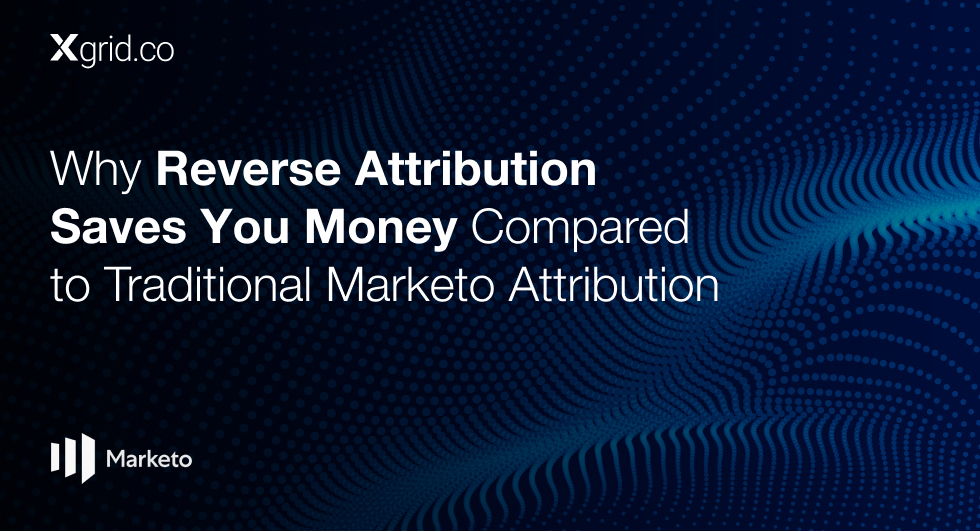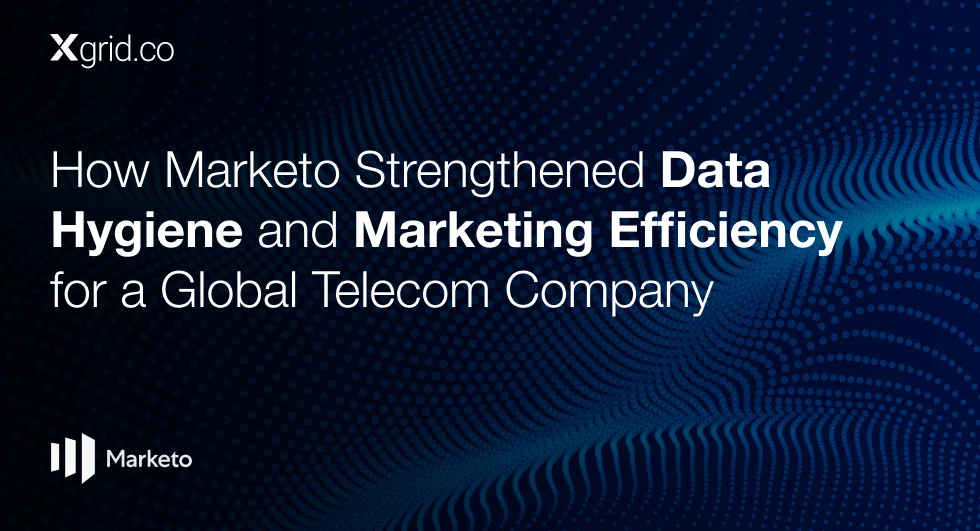How to Design a Program & Event Taxonomy in Marketo That Makes Reverse Attribution Work
When it comes to reverse attribution in Marketo, most marketers rush to the modeling stage—only to find that the data is too messy, inconsistent, or incomplete to tell a reliable story. Without a clean program and event taxonomy, your attribution model risks overcounting, undercounting, or worse, misrepresenting the true influence of marketing on pipeline.
In this guide, we’ll show you how to design a program and event taxonomy that makes reverse attribution work—from building canonical program tables to defining success statuses and fixing missing data. By the end, you’ll understand why taxonomy is the foundation of accurate multi-touch attribution and how to set yours up for long-term reliability.
Why Program & Event Taxonomy Matters for Reverse Attribution
Reverse attribution is all about reconstructing marketing influence on deals that are already in the pipeline or closed. Done right, it proves to leadership that marketing influenced revenue, even if campaigns weren’t perfectly set up from the start.
But here’s the catch:
- If your programs aren’t consistently named,
- If success statuses aren’t clearly defined,
- Or if engagement data is missing,
…then your reverse attribution model won’t hold up in front of the CMO, CFO, or board. A strong taxonomy provides the consistency, structure, and auditability that turns messy campaign data into a story leadership can trust.
Step 1: Build a Canonical Program Table
The first step in designing a reliable taxonomy is creating a canonical program table—a master sheet that standardizes every program by channel, type, and ownership.
Example:
This ensures that every webinar, whitepaper, or event is tagged consistently across Marketo and Salesforce. It also makes downstream reporting easier—whether you’re segmenting by channel or rolling up ROI by program type.
Step 2: Identify High-Value Program Types
Not all programs are created equal. For reverse attribution, focus on program types that actually move the needle in pipeline.
High-value examples include:
- Webinars (live + on-demand)
- Whitepapers and eBooks (gated assets)
- Product trials and demo requests
- ABM campaigns
- Paid ads (Google, LinkedIn, programmatic)
- Newsletters and nurture campaigns
- Offline events (tradeshows, dinners, field events)
- Chatbots that qualify leads
By cataloging these high-value types, you’ll know which programs to prioritize in attribution and which to treat as noise.
Step 3: Define Clear Success Statuses
Attribution depends on one simple question: What counts as success?
Each program type should have a clear status ladder with one—and only one—defined success.
Example (Webinar):
- Invited → Registered → Attended Live (Success) → Attended On-Demand → No-Show
Example (Newsletter):
- Sent → Clicked (Success) → Converted
This standardization prevents confusion like “Is a webinar registration enough to count?” or “Do newsletter opens matter?” In attribution modeling, only Success statuses should trigger attribution credit—otherwise, you risk inflating influence with vanity metrics like opens or page views.
Step 4: Fix Missing or Inconsistent Data
Even the best taxonomy won’t work if your data is broken. Before building attribution models, run through these data hygiene checks:
- Backfill missing Campaign Member data for key programs.
- Standardize UTMs for channel/source tracking.
- Deduplicate records across Marketo and Salesforce.
- Fix missing Opportunity Contact Roles—critical for proving influence.
- Check for missing Successes (e.g., attendees not flagged properly due to sync errors).
These fixes ensure that your taxonomy reflects reality and that every success status is captured in reporting.
Step 5: Make Touchpoints Attributable
Once taxonomy and hygiene are in place, you can map touches into clear, attributable events. For example:
- Chatbots → Conversion events (Qualified/Booked = Success).
- Website visits → Key pages like pricing/contact (repeat visits = Success).
- Newsletters → Clicks, not opens (clicks = Success).
Converting raw engagement signals into program-level successes is what makes reverse attribution possible—it turns noise into structured data that can flow into Salesforce Campaigns and pipeline reports.
Why This Foundation Is Critical
Without taxonomy, reverse attribution is a house of cards. With it, you get:
- Reliable reporting: Attribution totals match CRM pipeline, preventing double-counting.
- Trust from leadership: CMOs and CFOs see a clear story of marketing’s impact.
- Faster insights: You can quickly surface which programs influenced the most revenue.
- Actionable optimization: Marketing teams know which channels to scale and which to cut.
In short, a clean program and event taxonomy is the backbone of reverse attribution—and the key to proving marketing’s true influence on revenue.
Final Thoughts
Reverse attribution is one of the most powerful plays in Marketo because it lets you prove impact retroactively. But the model only works if it’s built on a strong foundation of clean, standardized program taxonomy and success rules.
If you want to set up reverse attribution in Marketo, start here:
- Build your canonical program table.
- Identify high-value program types.
- Define one clear Success per program.
- Fix missing or broken data.
- Map touchpoints into attributable events.
Get these right, and your reverse attribution model won’t just work—it’ll win over leadership with trustworthy, revenue-backed insights.





